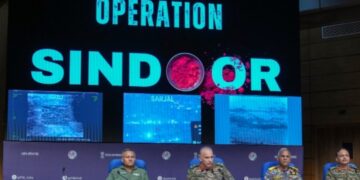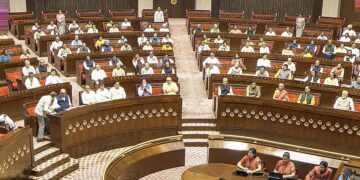Amidst the escalating conflicts between Israel and Palestine, a battle is unfolding not only on the ground but also on social media. The mainstream news is lately filled with distressing visuals showing the devastation from both sides, with a particular focus on vulnerable populations, including women, children, the elderly, and civilians. Blind-sided Campaigns and pro-Hamas Trends illustrate how advocacy, stocked with inaccuracies and biases, can gain traction and be disseminated through community platforms.
Time and again, such narratives have deeply penetrated social media and news channels, from local to international with an intent to influence and brainwash masses. Orchestrated via IT cells, central machinery, and several lobbies, this terror-supportive advocacy finds its way into mainstream conversations through platforms like tweets, Facebook, WhatsApp, Instagram, and YouTube, significantly influencing local discussions.
Social media platforms have, unfortunately, evolved into fertile ground for radical Islamists, who with their manipulative practices aim to shape extremist ideology and mold public opinion. For these terrorist sympathisers, the Digital age serves as a medium for amplifying this dangerous propaganda, a phenomenon known as ‘Information Jihad.’
In today’s interconnected world, the potential for extremists to exploit information as a weapon is a growing concern. As the world becomes increasingly reliant on information technology, the risk of information terrorism expands. In this section, we’ll look into the methods employed by information terrorists and like-minded groups, particularly when information technology serves as a threat within a larger operation. And there is far-reaching impact of this extensive manipulation, which has the potential to lead to substantial misunderstanding, considering the present scenario?
As we look at the ongoing Israel-Palestine conflict, it becomes evident that the very information we encounter can be weaponized, a threat you can term as ‘Information Jihad.’ In such context, the propaganda’s reach and impact have raised significant concerns.
This threat is pervasive and manifests in even more insidious forms on social media, instrumented by terror mindsets. Many of us already know the repercussions of how posts shared without the right context, manipulated to garner negative headlines can lead to dangerous consequences. Nupur Sharma’s incident which was blown out of proportion is one such example. While the promotion of biased narratives potentially fuels the spread of misinformation, in more dire circumstances, it can even incite fear and violence.
Why this gravity of “Information jihad” becomes even more apparent when conflicts, like the ongoing Israel-Gaza crisis, are in play? On one hand, social media gets flooded with posts and tweets that turn out to be fake. On the other, Images of children, as victims of violence, is largely manipulated to advocate for one side of the conflict, using emotional manipulation as a tool.
Numerous social media accounts from countries like Pakistan, Bharat, Turkey, Africa, and the Middle East are actively sharing this kind of content on a daily basis. These posts show the destruction and human suffering, stirring strong emotions on social media to an extent where people feel a mix of anger, hate, and deep sadness as they witness the tragic consequences of the ongoing conflict.
As the Israel-Palestine conflict continues to unfold, this new kind of battle is raging online on a daily basis proving evidently, that information warfare is a powerful tool for terror mindsets.
You must be coming across pictures on social media showing children amidst the debris of destroyed buildings or crying amidst the lifeless bodies and you must have seen dolls portrayed as human babies, terrorists of Hamas pretending to be a victim of an Israeli Strike etc.
While, in the aftermath of major attacks or natural disasters, people generally rush to share such pictures and videos on social media, children, unfortunately, become the victims of this emotional manipulation. The pictures are also sometimes merged into photo collages, making it even more challenging to identify the manipulations. Although some individuals seek attention and popularity through trending hashtags, others have sinister motives, aiming to spread false information while playing a ‘victim card’.
This is a prime example of how images from different conflicts are mixed and merged, making it challenging to distinguish fact from fiction.
While Heart-wrenching images of fathers cradling their babies and women mourning over the lifeless bodies of children have flooded our screens in the last few weeks, evoking profound emotions, it becomes crucial to recognize that not all of this information is Real ! Sometimes, these images are from a different time period or a completely unrelated place, manipulated in a deceptive manner to generate sympathy for a particular cause. In other instances, authentic images and videos are shared with false context, fueling misconceptions about the ongoing situation. They are doctored so it goes further to advocate from across the globe for an entire industry that exists to stage fake images for propaganda purposes.
While the immediate threat to Western societies primarily stems from physical and potentially bio-weapons, we must also prepare for future threats in the realm of cyber-terrorism, which has infiltrated not just traditional media outlets and Twitter but also local WhatsApp groups, significantly influencing daily conversations and shaping local narratives.
It’s important to be cautious when viewing posts on social media, Such posts may not always accurately represent the current situation, and they can be manipulated or repurposed from other conflicts/ill-motives. Critical thinking and fact-checking are crucial when dealing with viral posts and videos on social media, not just during the Israel-Gaza conflict but in various crisis situations. These manipulative practices have been seen before and aren’t limited to a specific conflict. They have also been used to target Bharat’s Union Territory of Jammu and Kashmir, with the aim of misleading the world by spreading manipulated content and posts while supporting Pakistan-linked terror networks.
It’s a reminder of the importance of verifying information and maintaining a discerning approach, especially in today’s digital age. Because, as part of big conspiracies, the objective of this widely spread network is pretty clear – to mislead and to advance particular agendas supporting terror networks while making their work easier, off the ground. Those responsible for these manipulations are not confined to a single society or region. They have an ecosystem almost impossible to track down and they have faces almost negligible to hunt down.
Shockingly, many influencers and groups, both voluntary and ideologically driven, work together to spread these narratives. This manipulation is right now being widely employed for anti-Israel propaganda, aimed at garnering global sympathy. Such staged and doctored content leads to the amplification of propaganda, a disturbing trend in the digital age. In Israel-Palestine’s context, these altered images and videos are commonly coming from what people are referring to as “Pallywood productions,” a term being used to describe images and videos staged by Palestinians to portray Israel in a negative light.
As per UNICEF, hundreds of Israeli and Palestinian children became the victims of terrorism at the hands of extremists in the longstanding conflict since the crisis escalated. While Palestinians used images of children in propaganda warfare for a long time, their global supporters have widely circulated it without verifying its origins or authenticity, Or may be the ecosystem has purposely done so to further escalate the matter. The images are so meticulously crafted that they can easily deceive viewers into believing ‘painful Palestinian suffering.’ Naturally, this flood of posts can stoke hatred and misunderstanding, potentially escalating into fear and violence.
No wonder, the repercussions of these attempts to oppress while portraying themselves as oppressed are far-reaching and profound. At least ordinary individuals navigating daily trends must stay vigilant, for terrorism is no longer limited to any soil or neighboring territories; it’s now waged on digital platforms, with sinister agendas being disseminated conveniently from these hubs of terror.
For this context, pro-Hamas trends have suddenly multiplied since the Israel-Palestine conflict began, despite most countries siding with Israel in response to terrorism.
The campaign trends almost every day in Bharat as well with radical Islamists proposing for a global jihad.
So how can we discern fact from fiction amid this digital threat?
With the rising distortion of information on social media, it’s essential to approach content with a discerning eye, striving to separate fact from fiction. Our responsibility is to promote truth and empathy while seeking a deeper understanding of the conflicts and crises that afflict our world.
Information Terrorists, as we call them, employ various tactics to achieve their objectives. One particularly alarming method involves manipulating and exploiting information systems, often by altering or stealing data or coercing systems to perform unintended functions. Imagine the chilling scenario of air traffic control systems being spoofed, potentially endangering the safety of air travel.
What we really need to understand in these challenging times, is that “terrorism isn’t limited to physical acts”; it can surface in even more threatening ways on social media, publicized by a network of extremists.
While addressing terrorism in a democratic society indeed presents a significant challenge, striking the right balance between safeguarding civil liberties and ensuring civil security is of paramount importance. The security measures are undeniably vital, but, in the digital era, their implementation must also respect the fundamental rights and freedoms of individuals. This call to action serves as a reminder not only to proactively address the growing threats to our information society but also to uphold our democratic values.

















Comments